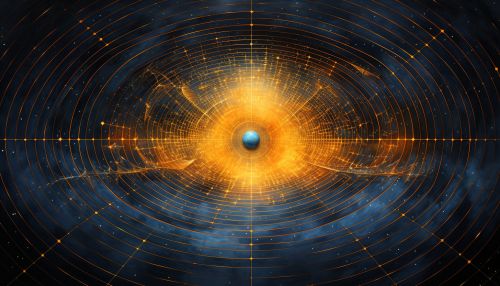Einstein's field equations
Introduction
Einstein's field equations, also known as the Einstein equations, are a set of ten interrelated differential equations that describe the fundamental interaction of gravitation as a result of spacetime being curved by mass and energy. They were first published by Einstein in 1915 as a cornerstone of his general theory of relativity.
Mathematical Formulation
The Einstein field equations (EFE) can be written in the form:
Rμν - ½gμνR + gμνΛ = 8πGTμν
Where: - Rμν is the Ricci curvature tensor - gμν is the metric tensor - R is the scalar curvature - Λ is the cosmological constant - G is the gravitational constant - Tμν is the stress-energy tensor


Physical Interpretation
The EFE describe how matter and energy in the universe influence the curvature of spacetime. The left-hand side of the equation represents the geometry of spacetime, which is determined by the distribution of mass and energy (represented on the right-hand side). The equations are nonlinear, which makes finding exact solutions challenging.
Solutions and Applications
There are many known solutions to the EFE, each corresponding to a different physical situation. Some of the most notable include the Schwarzschild solution, which describes spacetime outside a spherical, non-rotating mass, and the Friedmann-Lemaître-Robertson-Walker metric, which is used to model an expanding universe.
The EFE have numerous applications in cosmology and astrophysics, including the study of black holes, neutron stars, and the Big Bang.
See Also
- General Theory of Relativity - Gravitational Waves - Cosmology
